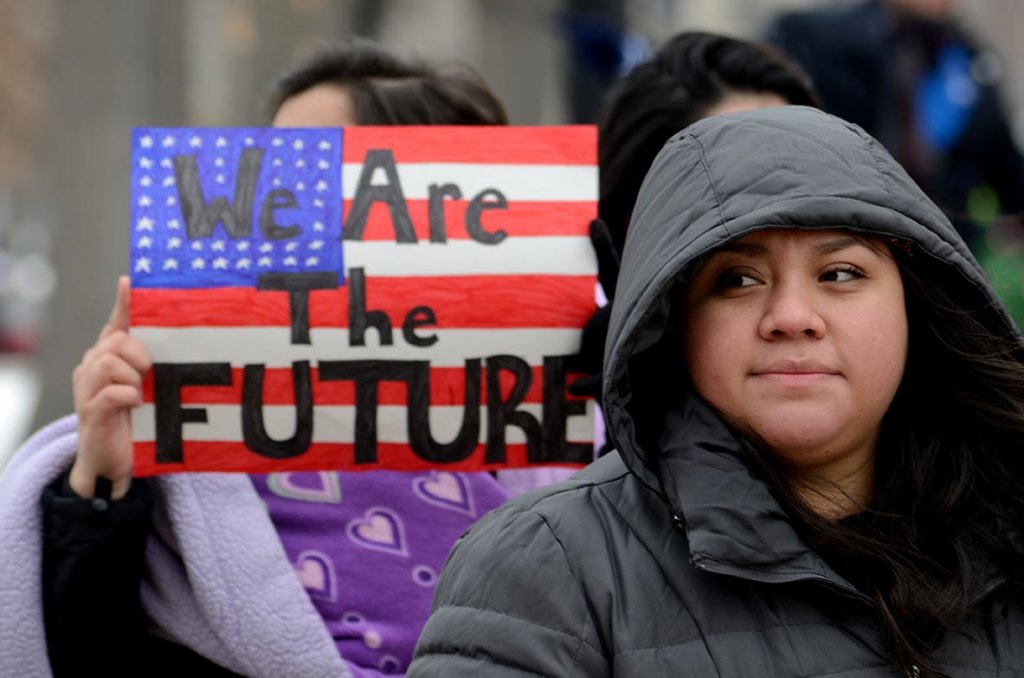3 reasons why the White House must deliver on relief for longtime undocumented residents
As Congress oversees another session without passing legislation that resolves the legal status of longtime undocumented residents, the need to protect this group has grown more urgent, especially for the 579,000 Deferred Action for Childhood Arrivals (DACA) recipients that face the prospect the U.S. Supreme Court may strike down the program in 2025.
By Cristobal Ramón, Senior Immigration Advisor, UnidosUS
While protecting DACA recipients and other undocumented residents through legislation is the best option, Congressional inaction means it is time that the White House act on relief to help longtime residents waiting decades for protection, mitigate their vulnerability against future deportation campaigns, and meet the Latino community’s top immigration needs.
Undocumented Residents Have Been Waiting Decades for Relief
The White House needs to act on relief to protect the large group of individuals who cannot access protection. Currently, the last set of legalization programs Congress created in the 1990s require individuals to have arrived by certain dates in 1990. In other instances, individuals need to have sponsors file certain documents for their application before 2001.1
Given that most of the undocumented population arrived in the late 1990s, these requirements have most of them without a route to protection. An estimated 68 percent of the 10 to 11 million undocumented residents have been waiting a decade or more for relief, which translates to greater vulnerability for many of the country’s 11.3 million mixed-status families and employers reliant on these longtime workers across a range of industries.
Executive relief programs can help some of these individuals. Granting green cards to undocumented spouses of U.S. citizens can help an estimated 800,000 spouses. Allowing individuals to apply for cancellation of removal, which allows non-citizens in removal proceedings with acute family needs to seek a green card through a non-adversarial process, could benefit 1.6 million undocumented parents currently without protection.
Time is Running Out to Protect These Undocumented Residents
White House should also implement executive relief programs to protect DACA recipients if the Supreme Court strikes down the program in 2025. Although the Supreme Court could order a gradual winddown of the program, this scenario would see approximately 800 DACA holders lose their work permits and protection from deportation every day for two years. Executive relief programs can help many DACA recipients find new forms of protection, shielding them from this scenario.
Executive relief can protect undocumented individuals against large-scale enforcement actions. Although the current administration has not engaged in widespread deportation raids, the last 30 years have seen administrations from both parties pursue these actions. Like DACA recipients, taking decisive action on relief in 2024 allows undocumented individuals to begin securing protection in the case that future administrations target immigrant communities.
Providing Relief for Longtime Undocumented Residents Is an Important Priority for Latino Voters
Providing relief to longtime undocumented residents also addresses a major policy priority for the Latino community. Passing legislation to legalize the current undocumented population consistently remains the Latino community’s top immigration priority, even as issues such as migration to the U.S.-Mexico border have gained more attention this year among Latino and non-Latino voters.
UnidosUS’s Roadmap for Protecting Longtime Undocumented Residents
The White House has the tools to protect longtime undocumented residents to address these challenges and opportunities. Although executive action does not replace legislation, the administration can adopt a battery of measures to reach these goals, ranging from using Temporary Protected Status (TPS) to provide temporary protection to measures that provide U.S. citizen spouses with green cards.
The administration must also work to fund the organizations and government agencies that will implement these proposals. This support to trusted community-based organizations would help grow legal services capacity that, in turn, can help applicants seeking relief navigate the application process. They must also provide USCIS and the immigration court system with enough financial and staffing resources to address an increase in applications for immigration benefits, including for work permits.




